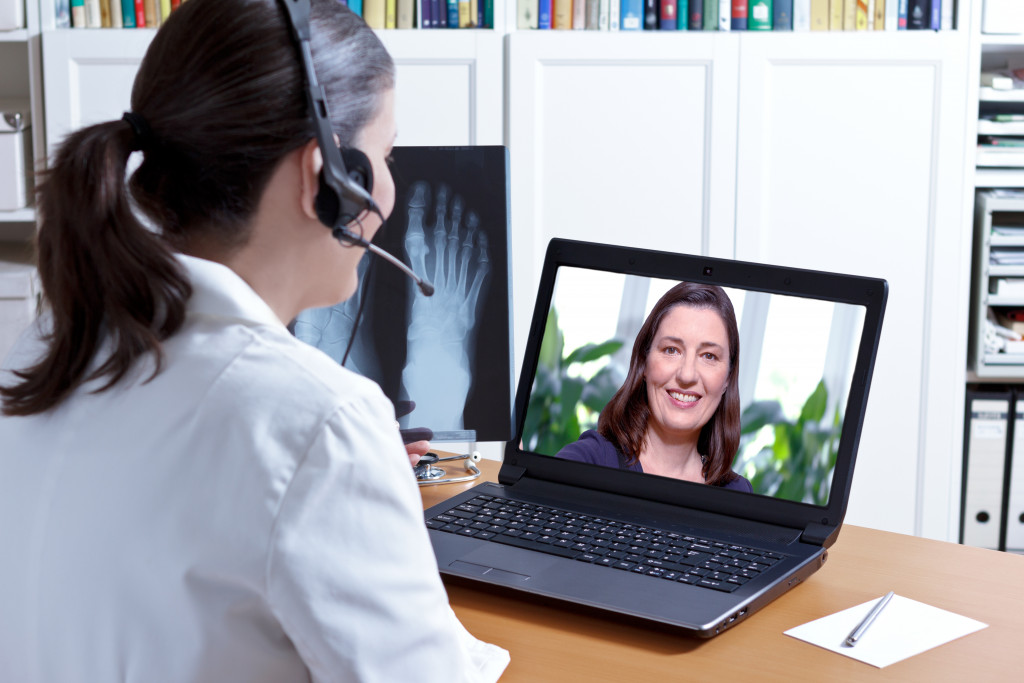Telehealth has been around for a while now, but the practice is only now gaining traction due to the ongoing global crisis. This structure allows both healthcare workers and patients to reduce exposure to each other through remote appointments. Although the nature of telemedicine consultations is quite similar to in-person patient visits, the set-up comes with its own benefits and drawbacks.
If you’re a solo medical provider or are running a healthcare business, here’s how you can make the most out of your telehealth consultations and ensure that these visits are as painless and trouble-free as your in-person ones.
Invest in high-quality equipment
If you can’t clearly see your patient’s symptoms or hear their complaints, your telehealth appointments will be rendered virtually pointless. Especially if your practice depends on analyzing visual symptoms — for example, if you’re running a physical therapy business and you need to assess your patient’s motor skills or if you’re a dermatologist and you need to examine your patient’s skin condition.
This is why it’s important to invest in high-quality video and audio equipment. You don’t need to spend thousands of dollars on a high-end microphone and camera. There are plenty of decently priced webcams that get the job done without burning a hole in your pocket, such as the Microsoft LifeCam HD-3000 which retails for $58, or the slightly more expensive Logitech C922 Pro Stream priced at $108. If you want to go the extra mile or if you live in a place that doesn’t have windows or appropriate lighting, you can invest in a small ring light, as well.
For sound equipment, you’ll need a high-quality microphone and earphones. It’s more cost-effective to buy a headset with a built-in microphone as opposed to buying them separately. A serviceable pair of earphones with a built-in microphone can retail for as cheap as $14 like the Panasonic ErgoFit In-Ear Headphones.
Give yourself extra time before the consultation
Sit down by your computer at least 15 minutes before the scheduled appointment so that you can test all the equipment, read through the patient’s records, double-check that the internet is running well, and ensure that there are no distractions nearby. Dedicating this time to getting everything in order minimizes the chances of technical difficulties during the consultation proper.

Close all irrelevant windows and programs
Having too many windows, tabs, and programs running alongside your video streaming program can slow down both your computer and your internet speed. Be sure to close all irrelevant windows and programs a few minutes before the appointment begins.
Scan the patient record beforehand
As with regular in-patient consultations, take some time to read through the patient’s medical history and complaint before the consultation starts. This ensures that the appointment goes over much more smoothly than if you were to wait for the patient to divulge all this information to you.
Ask for a thorough orientation
If you didn’t get a basic orientation on how to set-up the equipment and navigate the telehealth software, make sure to request one from either your company, IT department, or support team. Don’t forget to note down their contact details so that you can easily get a hold of them in case you have questions or if anything goes wrong.
Prioritize your patient’s privacy and comfort
Since this is a fairly new set-up that’s unfamiliar to most patients, it’s understandable for them to feel apprehensive about the procedure. Make sure to prioritize their comfort, and assure them that these appointments are confidential.
Maintain eye contact with them and occasionally respond or nod when they’re talking to let them know you’re paying attention. If there are other people in your room, such as nurses or attendants, don’t forget to introduce them to your patient. Likewise, anyone who doesn’t need to be there, such as family members or inessential staff, can be asked to leave the room for the sake of privacy.
Since not everyone has the best video and audio set-up, it’s important to speak slowly and clearly. Get your point across in as few words as possible, and make sure to ask your patients if they need any clarifications.
Be upfront about the efficacy of telehealth
No matter how hard you try, there are some cases that simply can’t be thoroughly evaluated through this set-up. If you feel that the risk of not examining them in-person outweighs the risk of coming in contact with them, then you can ask them to pay you a visit to your clinic for a physical consultation.
As the global crisis rages on, it doesn’t seem like the medical community’s reliance on telemedicine will die down any time soon. Adopting this set-up in your practice or healthcare business allows you to reach more patients safely. These tips will help you make the most of these consultations so you can provide care without the risk.

